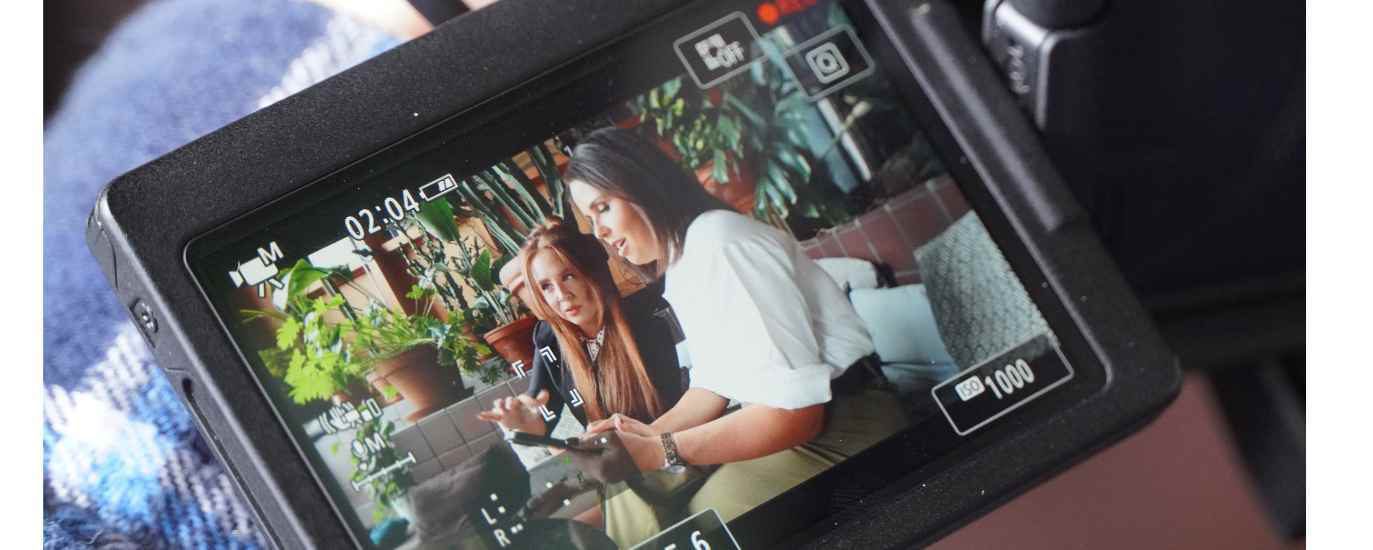Marketing Strategy
Branding
Activations
Social Media
Get to know us
Personalisation in Email Marketing: Your Ultimate Guide


Jordan Stachini
Contents
The Power of Personalisation
Personalisation in email marketing can be a game-changer for your campaigns. People are more likely to open, read, and engage with emails that speak to them personally. Imagine you receive two emails in your inbox. Think: which one are you opening? The one that reads “Dear Customer” or the other starting with “Hey [First Name]”.
Research on email personalisation found that adding the first name of the recipient in the subject line of an email can increase the performance of email campaigns. But there is much more to personalisation than simply throwing your recipient's name on every subject line.
It’s about standing out in the inbox. Tailoring your content to your recipients is like a digital handshake. When you use a person’s name, mention their past interactions with your brand, or recommend products based on their browsing history, you’re showing you care and are invested in their individual needs. Let’s look at how you can segment your audience and craft personalised email journeys. Personalisation has become an expectation for consumers. Which means – marketers – you need up your game and prioritise personalisation as a key marketing strategy.
The Building Blocks of Personalisation
Segmentation: Think of segmentation as the foundation of personalisation. Divide your email list into smaller groups based on shared characteristics. This might be demographics, purchase history, purchasing habits, or engagement levels. You can then tailor your content by sending targeted content to each consumer group. It really is that simple.
Dynamic Content: Personalisation doesn’t just involve addressing the recipient by their first name. It’s about finding opportunities to tailor the entire email to their interests. Use dynamic content blocks that change based on the recipient’s preferences, location, or behaviour.
Behavioural Triggers: Push them into action. Set up automated triggers for specific actions to try and drive the recipient to purchase. Why not send them an abandoned basket reminder or encourage post-purchase follow-ups? When you send an email aimed at a specific moment, you’re more likely to get a response.
A/B Testing: Experiment with different personalisation strategies to see which effort resonates best with your audience. Play around with your subject lines, use of images, and calls to action to fine-tune your approach.
Beyond Just ‘First Name’ Personalisation
“Hey [First Name]” is a great start, but it’s just scratching the surface of personalisation in email marketing. It goes wayy beyond slapping their name everywhere. Anyone can do that. It’s about tailoring emails that actually speak to your recipients’ needs. Not some generic spam that will end up in someone’s junk folder.
Personalisation in email marketing is crucial for branding as it helps businesses create a stronger and more meaningful connection with their audience. In order to take your email game to the next level and truly connect with your audience, you have to go beyond the basics …
1. Behavioural Personalisation
While using a subscriber’s first name is a step in the right direction, you can take it further by observing and responding to their behaviour.
Product Recommendations: Check their browsing and purchase history to suggest products they’re more likely to buy.
Abandoned Basket Emails: Give them a push. If they add items to their basket but don’t actually check out, send them a nudge to complete the purchase. This could be a reminder they need to complete the transaction.
Content Preferences: Check out which types of content they engage with the most and match this when sending them emails
2. Geolocation Personalisation
Why not leverage your audience’s geographic location to personalise your emails?
Local Events and Promotions: Highlight events or promotions specific to their city or region.
Weather-Based Recommendations: Send product recommendations based on the current weather in their area.
You see travel companies trying to sell holidays around the winter period, or clothing brands pointing you to their ‘seasonal essentials’. It’s effective because it’s cold and well … who the fu*k wouldn’t want to be on holiday in the sun?
Check out example emails below where they’ve used weather to influence consumer behaviour. Both emails have a call to action, ‘order now’ or ‘book your winter sun getaway’, that intends to push them into action.


3. Lifecycle Stage Personalisation
Not all customers are at the same stage of the customer journey. It’s about recognising where they are to which you then tailor your emails accordingly.
Welcome Them: New subscribers should receive an introduction to your brand and a warm welcome.

VIP Treatment: Loyal customers need to know you care. Hold onto them by offering exclusive offers, sneak peeks, and early access.
Re-Engagement: If someone has gone AWOL, send a re-engagement campaign to remind them of your brand and its value.
4. Personalised surveys and Feedback
Ask for opinions and feedback from your subscribers. Give them a voice to speak about your brand. Tailor these surveys to their interests and behaviour.
Product Feedback: Ask for their thoughts on the products they purchased
Content Preferences: Find out what they’d like to see more of in your upcoming emails
5. Storytelling and Narrative Personalisation
What stories speak to your audience? Think about this on a personal level – share testimonials or case studies that might align with their interests and needs. This will help your brand stand out in a crowded inbox, deepen customer relationships, and ultimately drive higher ROI.
By combining both strategies you can craft stories that resonate with each customer segment’s unique needs. To personalise the storytelling experience further, use dynamic content and incorporate customer names, location-specific details, or past interactions into the narrative.
So, this could be sharing a customer’s experience of a product within a specific location and how they benefited from this product. Or it could be personalising product recommendations within the context of a customer’s journey.
6. User-Generated Content (UGC)
If you haven’t used and abused UGC yet, what are you doing? Get your subscribers to generate content for your brand. Show that you value their contributions and reward them by offering discounts. UGC is the most authentic content on social media for brands. It speaks for your brand and builds credibility and trust. Don’t underestimate its power. This could be mega for your brand.
7. Birthday and Milestone Events
Who doesn’t appreciate a bit of love around their birthday? Remembering your subscriber’s special occasions, like birthdays or anniversaries of their first purchase, adds a personal touch to your emails. It shows you're invested in the customer’s journey. Offer discounts or exclusive content to celebrate with them.
Segmentation Tactics for Targeted Content
So … more on segmentation and how you can break down your email list into smaller, more targeted groups based on specific characteristics.
1. Demographic Segmentation
Age, gender, location, and income level are at the bread and butter of segmentation. These factors provide fundamental insights into your subscribers’ preferences.
Age-Appropriate Content: Sending age-specific content that resonates with different age groups. Your tone of voice might change depending on whether you're targeting students compared to older pensioners. Know your audience and tailor your content accordingly.
Localisation: Tailor emails based on the language, culture, and location of your subscribers. You don’t want to be throwing in random slang terms that people might not understand.
Income-based offers: Offer promotions or products that align with varying income levels.
2. Behavioural Segmentation
Look out for how subscribers interact with your emails and website as it will say a lot about their interests and intentions. Leverage this information for precision targeting.
Engagement Level: Send re-engagement campaigns to those who haven’t interacted in a while, and be sure to reward those loyal customers with exclusive offers.
Purchase History: Recommend products related to past purchases or upsell complementary items.
Website Activity: Have they shown interest in certain products or categories? If so, send them relevant content and offers surrounding this.
3. Email Engagement
How’s it looking? Are your subscribers opening and clicking on your emails? Segmentation allows marketers to send highly targeted and relevant email campaigns to different groups of subscribers, which can lead to increased engagement, higher open and click-through rates, and improved conversion rates. More on this 👇
Open Rates: Segment based on who opens your emails consistently, those who might have a nosy from time to time, and those who do not engage at all.
Click Behaviour: Identify the type of content or links they engage with, then send similar content based on your findings.
Email Preferences: Allow subscribers to choose their email frequency or content preferences. Let them make their own choices and honour it.
4. Purchase Cycle
Understanding where subscribers are in their buying journey can help you in knowing how to send the right messages at the right times.
Let’s break the customer journey down for you:
Awareness: At this stage, customers become aware of a problem or need. They might start researching or exploring potential solutions.
Consideration: In the consideration stage, customers evaluate different options, compare prices, read reviews, and narrow down their choices.
Decision: This is the point where customers make their final decision and complete the purchase.
Post-Purchase: After the purchase, customers assess their experience. This phase can significantly influence future buying decisions and brand loyalty.
To segment groups, break them down into the following groups:
New Subscribers: Welcome and introduce them to the brand. These are in the awareness stage.
Abandoned Basket: Remind them of these items left and push them to purchase.
Product Explorers: Subscribers who have been engaging with your emails and website, but haven't added items to their cart or completed a purchase. Send them product recommendations, reviews, and comparisons to help them make a decision.
Content Engagers: These are subscribers that engage with your content. Get their attention by sending in-depth product information, case studies, or user-generated content to assist in their decision-making process.
Discount Seekers: Who doesn’t love a good discount here and there? These types of customers will frequently respond to promotions and discounts. Use this to your advantage and send exclusive offers, limited-time deals, and product bundles to encourage conversions. Leverage the psychology of email marketing and use urgent CTAs to grab consumer attention.
Re-Engagement Targets: Have you got a few customers that have gone into hiding? Send them reactivation campaigns with personalised recommendations and incentives to rekindle their interest.
Repeat Customers: Nurture this loyalty with exclusive offers and personalised recommendations.
Advocates: You need to hold onto these types of customers. These are customers who consistently engage with your brand, leave positive reviews, or refer others. Get that UGC by getting them to become brand advocates.
5. Customer Lifecycle Stage
Recognise where subscribers are in their relationship with your brand. Are they potential buyers? Provide educational content to move them closer to making a purchase decision. If they’re new customers, send them a thank you message and send some tailored content across. If you’re lucky enough to have advocates for your brand, utilise this by encouraging them to refer friends or write reviews.
6. Segmentation Automation
Set up automated rules to ensure recipients move in and out of segments as their behaviour and data changes over time. There are two categories for this:
Dynamic segments: Create segments that update automatically based on the criteria you define.
Time-Based Segments: Send birthday emails or anniversary offers at the right time. Think about seasonal segmentation for the likes of Christmas and Halloween periods.
Crafting Personalised Email Journeys
Customers are demanding tailored experiences that resonate with their unique preferences and needs. Here’s a roadmap to engagement that can transform your email campaigns from mundane to sh*t hot.
1. Define Your Goals:
What do you actually want to gain from your email journey? Are you aiming to convert leads into customers, increase customer retention, or upsell to existing customers? Having clear goals will guide your entire email strategy.
2. Understand Your Audience:
We’ve told you how to do it, now you need to action this. Segment your email list based on demographics, behaviour, purchase history, and interests. The more specific your segments, the more personalised you can make your email journeys.
3. Map the Customer Journey:
Create a visual representation of your customer's journey, including stages like awareness, consideration, decision, and post-purchase. Identify touchpoints where email communication will work for you.
4. Develop Personalised Content:
Be sure that the email content resonates with each stage of the customer journey and each audience segment. Personalisation can include using recipient names, referencing past interactions, and tailoring product recommendations.
5. Choose the Right Email Types:
Select the appropriate types of emails for each stage of the journey. For example, use informative content emails for the awareness stage, product recommendations for consideration, and incentives for the decision stage. This way you are tailoring your message within the context of the customer’s journey.
6. Implement Automation:
Leverage marketing automation tools to send emails at the right time based on triggers and subscriber actions. For example, set up automated welcome emails for new subscribers or abandoned cart emails for those who leave items in their cart. Think of it as a physical reminder for customers to go back and complete their purchase.
7. A/B Testing:
Not sure what technique works best? Test it. Continuously refine your email journeys by conducting A/B tests on subject lines, content, images, and calls to action. Use data-driven insights to improve email performance.
8. Monitor and Analyse:
Regularly monitor the performance of your email journeys. Analyse those open rates, click-through rates, conversion rates, and revenue generated. Use this data to make those marketing emails slap even more next time.
9. Optimise for Mobile:
There’s nothing worse than opening an email that’s all over the place. You have to make sure your email journeys are mobile-responsive. The majority of your recipients will be accessing their emails on mobile devices, so make it a seamless mobile experience.
10. Personalise Beyond Email:
Now, this blog is all about email marketing but you gotta extend this personalisation beyond email. Use the data from your email marketing efforts into other marketing channels, such as social media and website personalisation too. It’s up to you which social media channels you choose to use.
11. Get the Green Light
Always comply with email marketing laws like General Data Protection Regulation (GDPR) and Privacy and Electronic Communications Regulations (PECR). Keep this in mind for your marketing communications and provide an easy way for subscribers to opt out.
12. Continuously Improve:
Email journeys are not static. Continuously gather feedback from subscribers, track results, and adapt your journeys to evolving customer needs and market trends.
The Benefits of Personalised Journeys
Now we all want to make our customers dead happy don’t we but … we have to think about achieving tangible results too. Adding personalisation in your email marketing can make or break the relationship between you and your customers. You need to maintain this personalised customer journey in order to see the following results…
Higher Open Rates: Capture attention
Improved Click-Through rates (CTR): Tailored content resonates with recipients
Increased Conversions: Relevant recommendations and incentives will drive action.
Enhanced Customer Loyalty: Personalisation fosters stronger customer relationships. Give them some love and they’ll show you some back.
Better ROI: Targeted emails generate more revenue for your business.
Customising personalised email journeys is no longer optional. You can’t sit around and wait for customers to come to you. You need to start this conversation. Understand your recipients by learning about their behaviours … this will inevitably drive results.
We hope this guide will be useful to you and will help you in starting your journey. What you waiting for? You might as well get going, it will lead you to increased engagement, customer satisfaction, and business growth.

Speak to Jordan today
Grab a brew. Have a read
You might also like...








